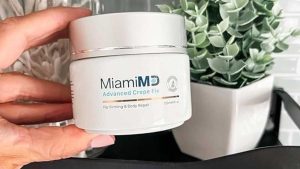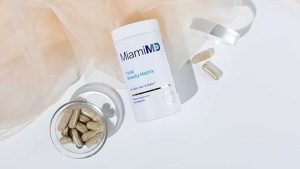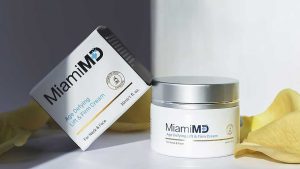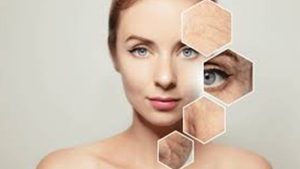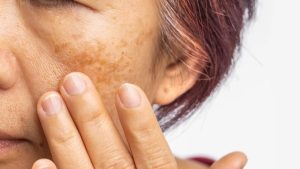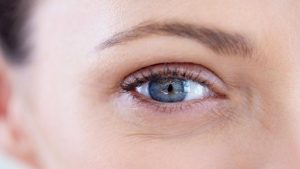Getting Rid Of Sunspots On Skin
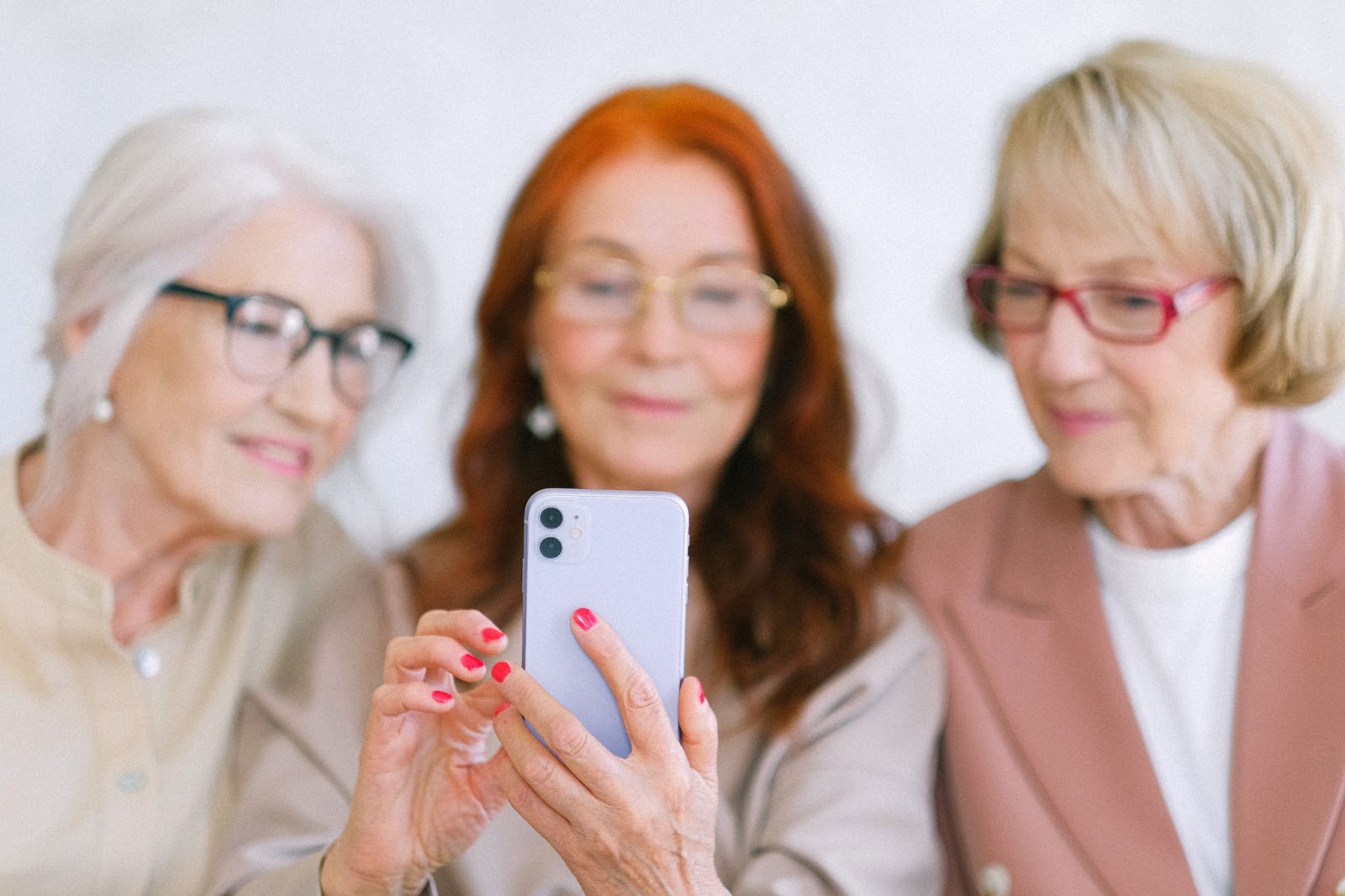
Sun spots seem to appear out of nowhere, but there is a lengthy process that is actually behind their formation.
For many people, their first thought after noticing sun spots on skin is wondering how to get rid of them. But is that possible? And, if so, how can you do that?
Miami MD has everything that you need to know on what sun spots are, how they form, and what you can actually do to make them disappear.
What Exactly Are Sun Spots?
Sun spots. Age spots. Liver spots. All of these are common terms for the same skin condition… solar lentigines.
While they may be unsightly, sun spots on skin are nearly always benign (non-cancerous), although any new areas of discoloration should be checked out by a medical professional.
This is especially true for new areas that seem to change color quickly, bleed, or have irregular borders…. don’t take any chances with your health.
Sun spots on skin are essentially just areas of darker pigmentation, mostly on the face.
However, they can also occur in other areas that get more sun exposure, like the back of the hands, the shoulders, the neck, the tops of the feet, and the upper back. They are flat and not raised (think birthmark instead of mole) and can be brown, black, or tan in color.
Sun spots are also either oval or round in shape, and can vary in size from very small to fairly large at around half an inch. They also tend to group together instead of occurring individually, which is part of what makes them so much more noticeable.
It’s important to note that, although one of the “nicknames” for solar lentigines is liver spots, these spots aren’t actually related to any dysfunction of the liver.
Risk Factors For Developing Sun Spots On Skin
While anyone can develop sun spots, there are a few more common risk factors that make it far more likely that you may end up with them in the future.
The first risk factor is having a lighter skin tone. People with more melanin in their skin also have more natural protection from the ultraviolet radiation that comes from the sun.
Because exposure to UV radiation, especially chronically, triggers your body into producing more unnatural melanin (this is what makes you appear “tan” in the summer), that pigment can accumulate in certain spots more than others.
With a lighter skin tone, those accumulations are far more visible than those with darker skin.
In fact, the body creates more pigment in an attempt to help protect your body from the sun so, although they may not be cosmetically appealing, sun spots are actually a sign that your body is doing what it’s supposed to do.
Age is also a risk factor. People over the age of 50 are the most common age group to experience sun spots on skin, although people with frequent, chronic sun exposure may develop them sooner.
Tanning beds can also produce enough UV radiation over time to trigger the formation of sun spots on skin, as well as potentially increasing your risk of skin cancers like melanoma.
Some people may see them as a safer option than tanning outdoors, but that simply isn’t the case. UV radiation is UV radiation, no matter where it comes from, and you should protect yourself appropriately.
How To Get Rid Of Sun Spots On Skin At Home
Unfortunately, there are no time machines that we can use to go back in time and avoid excessive sun exposure. If you’ve noticed that your skin has developed sun spots, you’re probably wondering if it’s possible to get rid of them.
The good news is, with the right knowledge and products, fading those areas is definitely possible. However, it’s important to keep in mind that, just as sun spots on skin don’t appear overnight, they also won’t disappear overnight either.
The key is committing to a treatment and sticking with it, instead of stopping once you notice a small difference.
Miami MD’s Dark Spot Corrector was designed specifically to help counteract sun spots and other forms of hyperpigmentation by helping to even, smooth, and correct the skin’s overall complexion. It also visibly reduces the appearance of that DNA discoloration, fading and then ultimately causing them to disappear entirely.
The cream works to help increase how quickly skin cells can “turn over,” safely and painlessly helping you to return your skin to its previous, youthful appearance in no time.
There are a few ingredients to look for that have been proven especially useful in helping to reduce the appearance of sun spots on skin – hydroquinone and retinoids more specifically.
However, one of the most potentially effective is not a medication but an antioxidant… vitamin C.
What makes vitamin C so amazing is that it helps with both the reduction of the appearance of sun spots on skin while also offering protection from UV radiation from the sun.
When applied topically, especially before sunscreen, it keeps you more safe as it works to even your skin tone. It’s part of why it was included in the Dark Spot Corrector, alongside other ingredients like alpha-arbutin, resveratrol, glycolic acid, and kojic acid.
Procedures To Treat Sun Spots On Skin
Sometimes, even with frequent, consistent at home treatment, the sun spots on your skin may not fade as much as you’d like.
In cases like these, when you’ve exhausted all of your over the counter options, it may be time to look into procedures to treat your sun spots that need to be performed by a medical professional — either in an office setting or at a certified spa.
These procedures can vary in intensity and cost, depending on how quickly you want your sun spots gone and how much you’re willing to spend. Some may take a session or two, while others may need multiple sessions to really see progress.
For a quick but expensive procedure option, you may consider laser treatment or intense pulse light (IPL). A similar option is cryotherapy, where the spots are literally frozen off.
Both treatments have the potential to be uncomfortable, if not outright painful, and take time to heal from after they are completed.
If you are interested in slightly less involved procedures, there are other options like microdermabrasion, microneedling, and chemical peels that still require a professional to perform them but aren’t as invasive as the aforementioned procedures.
Your dermatologist will recommend which procedure is best for both your skin and your wallet, but it’s worth trying over the counter skin care treatment before making this investment.
Sun Spots On Skin – Why Prevention Is Key
Instead of working on removing sun spots on skin, why not do everything you can to prevent them in the first place? Luckily, prevention is not only possible, but far easier than you think.
The most important thing that you can do for your skin, whether you’re worried about sun spots or not, is to make sure to protect your skin from the sun.
Having skin that tends to burn easily when exposed to ultraviolet radiation is a major risk factor for developing skin cancer later on in life. While sun spots are cosmetic, skin cancer can be deadly.
The good news is that the same product can help prevent both – a quality sunscreen.
When choosing a sunscreen, there are a few recommendations to keep in mind, according to the American Academy of Dermatology Association.
First, choose a sunscreen that offers broad-spectrum protection from both UVA and UVB rays. You’ll also want to make sure that it is at least 30 SPF (sun protection factor). And finally, a quality, protective sunscreen should always be water resistant.
Sunscreen should be applied at least 15 minutes before you head out for the day, and reapplied at least every 2 hours (and more if you’re swimming or sweating, even when using a water resistant brand).
It’s also not a bad idea to avoid direct sun exposure as much as possible, whether that means staying out of the direct sun during the hottest parts of the day (usually between 10 am and 2 pm) wearing a hat and UV protectant sunglasses when you do go out or finding as much shade as you can.
There are also clothing options that offer their own form of UV protection, known as ultraviolet protection factor (UPF). Ultimately, a tan just isn’t worth the future risk that comes with the sun exposure needed to create it.
In Conclusion
Don’t let sun spots on skin get you down. Use your knowledge of what causes these dark areas on your skin and Miami MD products specially formulated to help reduce their appearance to take your control back.
Just make sure that you follow up treatment with a focus on using sunscreen every single time that you go outside to help prevent them from reoccurring while also reducing your risk of developing skin cancer in the future. You’re never too old or too young to focus on your skin.
Sources:
What can get rid of age spots? | American Academy of Dermatology Association
What Are the Risk Factors for Skin Cancer? | CDC
Sunscreen FAQs | American Academy of Dermatology Association
